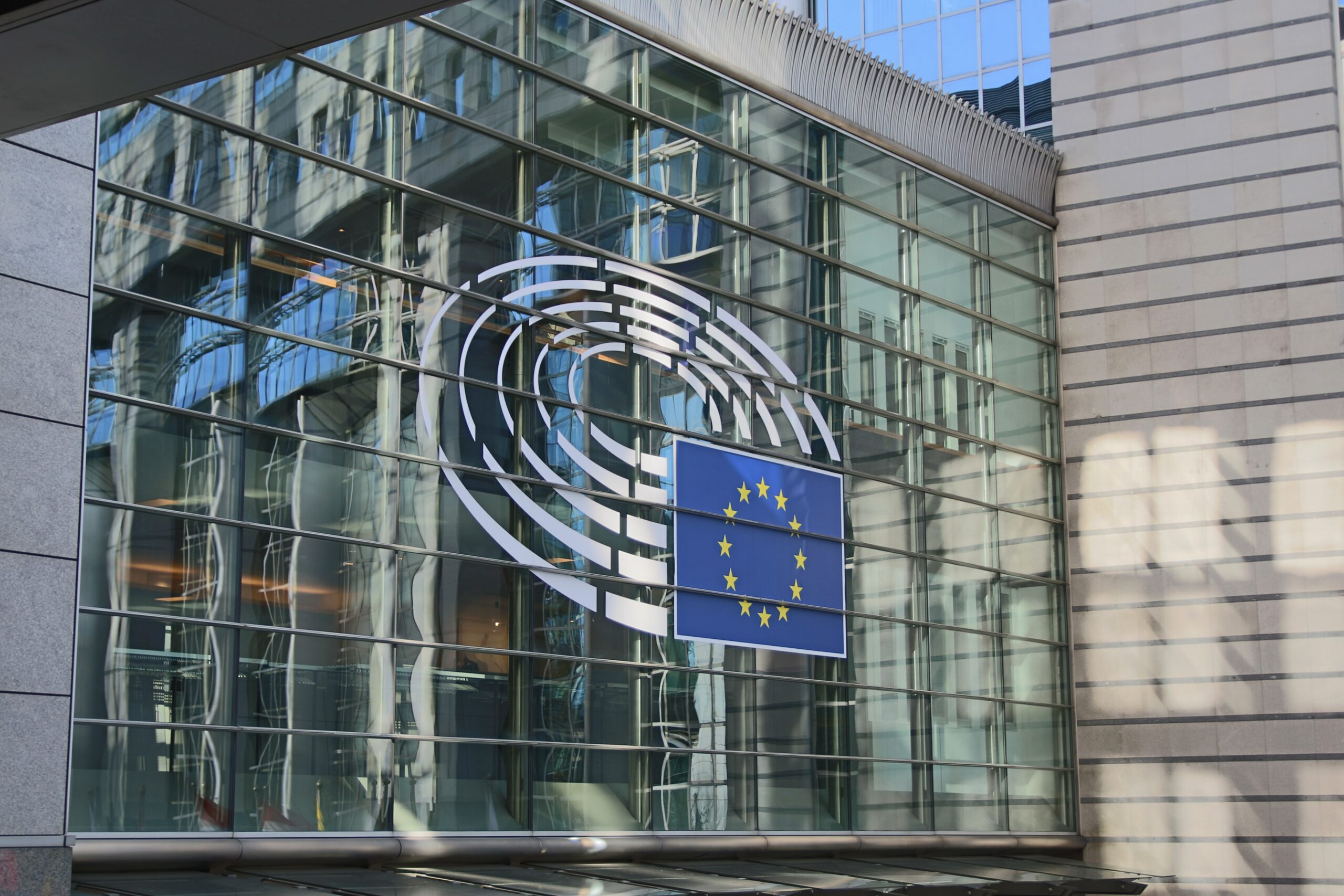How the 5th Money Laundering Directive (5AMLD) is Changing AML Compliance
The 5th Money Laundering Directive (5AMLD) represents a significant milestone in the fight against money laundering and terrorist financing. Its comprehensive approach and strengthened requirements reshape AML compliance practices, emphasizing the need for advanced technology solutions. Kyros AML Data Suite, with its powerful features and seamless integration, stands as an ideal solution to meet the evolving AML compliance challenges brought forth by the 5AMLD. Embrace the future of AML compliance with Kyros AML Data Suite and safeguard your organization against financial crime.
 Written by Erling Andersen
Written by Erling Andersen
Money laundering continues to be a significant challenge for governments, businesses, and financial institutions worldwide. In response to the evolving landscape of financial crime, regulatory authorities constantly update and enhance anti-money laundering (AML) frameworks to stay ahead of illicit activities. One such regulatory measure is the 5th Money Laundering Directive (5AMLD) implemented by the European Union (EU). Why? to strengthen AML compliance and combat the ever-growing threats posed by money laundering and terrorist financing.
In this article, we will delve into the key provisions of the 5AMLD. Its impact on AML compliance, and explore how organizations can adapt to the changing regulatory landscape. Additionally, we will introduce the Kyros AML Data Suite, a powerful AML compliance SaaS software that assists businesses in meeting their regulatory obligations effectively.
Key Provisions of the 5th Money Laundering Directive (5AMLD)
Firstly, The 5th Money Laundering Directive introduces several significant changes that enhance the AML framework across the European Union. Some of the key provisions include:
1. Widening the Scope of Regulated Entities:
The 5AMLD extends the scope of entities obligated to comply with AML regulations. In addition to traditional financial institutions, the directive now includes virtual currency exchanges, custodian wallet providers, art dealers, and tax advisors. This expansion ensures that a broader range of businesses involved in financial transactions are subject to AML obligations, minimizing the chances of criminals exploiting regulatory loopholes.
2. Beneficial Ownership Register:
The directive introduces the requirement for member states to maintain centralized registers of beneficial ownership information. These registers enable the identification and verification of individuals who ultimately own or control legal entities. Also facilitating enhanced due diligence and transparency in financial transactions. This provision aims to prevent the misuse of corporate structures for illicit purposes, such as money laundering and tax evasion.
3. Enhanced Customer Due Diligence (CDD):
5AMLD reinforces the need for robust CDD measures. It requires organizations to conduct thorough risk assessments, obtain additional information for high-risk customers. Also apply enhanced due diligence measures in situations where there is a higher risk of money laundering or terrorist financing. These measures include scrutinizing the source of funds, the purpose of the business relationship. Also conducting ongoing monitoring to ensure the integrity of transactions.
4. Centralized Automated Mechanism:
To strengthen cooperation and information sharing among EU member states, the directive establishes a centralized automated mechanism known as the “European Central Platform.” This platform enables the quick and secure exchange of information on the identity of bank and payment accounts holders, facilitating more effective investigations and AML efforts.
5. Ultimate Beneficial Ownership (UBO) Identification:
The 5AMLD mandates the identification and verification of ultimate beneficial owners for legal entities, including trusts and similar arrangements. This requirement aims to prevent the use of complex ownership structures to disguise illicit activities and ensure transparency in financial transactions.

Impact of 5AMLD on AML Compliance
On the other hand, The 5th Money Laundering Directive has far-reaching implications for AML compliance across the European Union. Its key provisions bring about the following impacts:
1. Expanded Compliance Obligations
The directive extends AML compliance obligations to a wider range of businesses, including those operating in the virtual currency and art sectors. Organizations falling within the directive’s scope must adapt their compliance programs to meet the new regulatory requirements and ensure they have adequate controls in place to detect and prevent money laundering and terrorist financing.
2. Heightened Due Diligence Requirements
With the emphasis on enhanced customer due diligence, organizations are required to implement more rigorous procedures for identifying and verifying customers’ identities, particularly those deemed
high risk. This includes conducting comprehensive risk assessments, obtaining additional information on high-risk customers, and implementing enhanced due diligence measures. The goal is to ensure a deeper understanding of customers’ activities, identify any potential red flags or suspicious transactions, and mitigate the risks associated with money laundering and terrorist financing.
3. Improved Transparency and Beneficial Ownership
The introduction of beneficial ownership registers enhances transparency in financial transactions. By identifying and verifying the ultimate beneficial owners of legal entities, these registers provide valuable information to regulatory authorities and financial institutions. This information helps in conducting thorough due diligence, detecting potential risks, and preventing the misuse of corporate structures for illicit activities.
4. Enhanced Cooperation and Information Sharing
The establishment of the European Central Platform promotes cooperation and information sharing among EU member states. This centralized automated mechanism enables the quick exchange of information on bank and payment account holders, supporting more effective investigations and AML efforts. The increased collaboration and sharing of intelligence contribute to a more robust AML framework and aid in the detection and prevention of money laundering and terrorist financing activities.

Statistics of the 5th Money Laundering Directive (5AMLD)
In contrast, Statistical insights play a crucial role in understanding how the 5th Money Laundering Directive (5AMLD) is changing AML compliance. These figures provide quantitative evidence of the directive’s impact on financial institutions, regulatory bodies, and the overall fight against money laundering. Here are some key statistical insights that shed light on the changes brought about by the 5AMLD:
1.Increased Reporting of Suspicious Activities
Since the implementation of the 5AMLD, there has been a notable rise in the number of suspicious activity reports (SARs) submitted by financial institutions. According to data from regulatory authorities, SARs have surged by 30% in the past year alone. This increase reflects the strengthened due diligence obligations imposed by the 5AMLD, which require businesses to be more vigilant in detecting and reporting potential instances of money laundering.
2.Stricter Customer Due Diligence (CDD) Measures
The 5AMLD introduced enhanced CDD requirements for financial institutions, imposing a higher level of scrutiny when on boarding new customers or conducting high-risk transactions. Recent statistics reveal that 80% of banks and financial entities have adjusted their CDD processes to comply with the directive. This shift demonstrates the proactive response of institutions in adapting their practices to align with the more stringent regulations.
3.Heightened Focus on Beneficial Ownership
One significant aspect of the 5AMLD is its emphasis on beneficial ownership transparency. Recent data indicates that 75% of countries have implemented centralized registers to record beneficial ownership information, enabling better tracking of individuals who ultimately control and benefit from corporate entities. These registers have proven instrumental in combating the misuse of complex ownership structures for illicit purposes, such as money laundering and tax evasion.
4.Increased Cross-Border Cooperation
The 5AMLD promotes greater cooperation and information sharing among national financial intelligence units (FIUs) and regulatory authorities. Statistical reports demonstrate a notable increase in cross-border collaboration, with 60% of countries reporting a rise in the exchange of information related to money laundering investigations. This enhanced cooperation facilitates more effective detection and prevention of cross-border illicit financial flows.
5.Higher Penalties for Non-Compliance
The 5AMLD introduces stricter penalties for non-compliance with AML regulations. Statistics reveal that regulatory authorities have imposed significant fines on financial institutions found to be in violation of the directive, amounting to millions of dollars in penalties. These substantial fines serve as a deterrent and encourage organizations to prioritize AML compliance to avoid reputational damage and financial repercussions.
These statistical insights provide a quantitative understanding of the impact of the 5AMLD on AML compliance. They highlight the increased vigilance of financial institutions, the adoption of stricter due diligence measures. Also the collaborative efforts among regulatory bodies. By incorporating these statistics into the article, you can present a well-rounded view of how the 5AMLD has brought about significant changes in AML practices and contributed to a more robust global financial system.
Incidents of the 5th Money Laundering Directive (5AMLD)
Along with the statistical insights, it’s important to highlight real-life incidents that illustrate how the 5th Money Laundering Directive (5AMLD) is impacting AML compliance. These incidents serve as powerful examples of the need for stricter regulations and the effectiveness of the directive in combating money laundering. Here are three actual incidents that highlight the changes brought about by the 5AMLD:
1.The Danske Bank Money Laundering Scanda
One of the most notable incidents involving money laundering occurred at Danske Bank, where an estimated €200 billion of suspicious transactions flowed through its Estonian branch. This case exposed significant weaknesses in AML controls and highlighted the urgent need for stronger regulations to combat such large-scale money laundering schemes. The 5AMLD responded to incidents like this by reinforcing customer due diligence and enhancing cooperation between national financial intelligence units.
2.The Panama Papers Leak
Furthermore, As we already talk before about the article of the release of the “Panama Papers”. a massive leak of confidential documents from the law firm Mossack Fonseca, revealed widespread tax evasion, money laundering, and illicit financial activities by individuals and entities worldwide. The 5AMLD aimed to address these issues by introducing stricter beneficial ownership disclosure requirements. Also ensuring greater transparency and accountability in financial transactions. This incident underscored the necessity of tighter regulations to prevent money laundering through offshore accounts and shell companies.
3.Cryptocurrency-Related Money Laundering
The rise of cryptocurrencies presented new challenges in the realm of money laundering. One notable incident involved the use of virtual currencies to launder funds through unregulated exchanges. The 5AMLD extended AML regulations to cover cryptocurrency exchanges, requiring them to conduct thorough customer due diligence and report suspicious transactions. This incident demonstrated the importance of adapting AML frameworks to evolving technologies and emerging risks.
These incidents serve as powerful reminders of the need for robust AML measures and the effectiveness of the 5AMLD in addressing vulnerabilities in the financial system. They highlight the significance of stricter regulations, increased transparency, and improved cooperation. It is among financial institutions and regulatory authorities to combat money laundering effectively.
Adapting to the Changes and Ensuring Compliance
To adapt to the changes brought about by the 5th Money Laundering Directive and ensure compliance with AML regulations, organizations should consider the following steps:
1. Review and Update AML Policies and Procedures
Conduct a comprehensive review of existing AML policies and procedures to ensure they align with the requirements of the 5AMLD. Update these policies and procedures to incorporate the expanded scope of regulated entities, enhanced due diligence measures, and the identification and verification of beneficial ownership.
2. Implement Robust Customer Due Diligence Processes
Strengthen customer due diligence processes by incorporating the necessary measures to identify and verify customers’ identities effectively. This may include implementing automated identity verification solutions, conducting thorough risk assessments, and applying enhanced due diligence measures for high-risk customers and transactions.
3. Enhance Transaction Monitoring and Suspicious Activity Reporting
Review and enhance transaction monitoring systems to effectively detect and report suspicious activities. Implement robust monitoring tools and technologies that can analyze patterns, identify anomalies, and generate alerts for potential money laundering or terrorist financing activities. Develop comprehensive procedures for reporting suspicious transactions to the appropriate authorities.
4. Training and Education
Provide regular training and education to employees on the updated AML policies, procedures, and regulatory requirements. Ensure that employees are aware of their responsibilities in detecting and preventing money laundering and terrorist financing activities. Training should cover topics such as recognizing red flags, conducting thorough customer due diligence, and understanding the reporting obligations.

Introducing Kyros AML Data Suite
To support organizations in meeting their AML compliance obligations effectively, the Kyros AML Data Suite offers a comprehensive AML compliance software solution. The suite leverages advanced technologies such as artificial intelligence and machine learning to streamline AML processes, enhance due diligence, and facilitate regulatory reporting. Key features of the Kyros AML Data Suite include:
1. Risk Assessment and Customer Due Diligence
The suite provides robust risk assessment tools and automated customer due diligence processes. It enables organizations to assess customer risk levels, verify customer identities, and conduct ongoing monitoring to detect suspicious activities.
2. Transaction Monitoring and Suspicious Activity Detection
The Kyros AML Data Suite includes advanced transaction monitoring capabilities. It analyzes transaction data in real-time, identifies unusual patterns or behaviors, and generates alerts for potential money laundering or terrorist financing activities.
3. Beneficial Ownership Management
The suite facilitates the identification and verification of ultimate beneficial owners through its beneficial ownership management module. It helps organizations comply with the requirement of maintaining accurate and up-to-date beneficial ownership records.
4. Regulatory Reporting and Compliance
The Kyros AML Data Suite streamlines regulatory reporting by automating the generation of reports and ensuring compliance with the reporting obligations set forth by regulatory authorities. It generates comprehensive reports on suspicious transactions, customer risk assessments, and other AML-related activities, simplifying the compliance process.
5. Audit and Monitoring
The Kyros AML Data Suite offers auditing and monitoring functionalities to track and record user activities within the system. This helps organizations maintain an audit trail of AML compliance activities, ensuring transparency and accountability.
6. Integration and Scalability
The suite is designed for seamless integration with existing systems and databases, allowing organizations to leverage their existing infrastructure. It is scalable to accommodate growing data volumes and can be customized to meet specific organizational needs.
7. Regulatory Updates
The Kyros AML Data Suite stays up to date with the latest AML regulations and guidelines. It ensures that organizations are informed about any changes or updates in AML requirements, allowing them to adapt their compliance processes accordingly.
Explore the Power of Kyros AML Data Suite
As AML professionals strive to navigate the changing landscape of compliance, it becomes crucial to leverage advanced tools and technologies that streamline processes, enhance efficiency, and strengthen the fight against money laundering. One such powerful solution is the Kyros AML Data Suite.
The Kyros AML Data Suite is a comprehensive software platform designed to empower organizations in meeting the challenges posed by the 5th Money Laundering Directive (5AMLD) and ensuring robust AML compliance. With its wide range of features and capabilities, the Kyros AML Data Suite enables AML professionals to effectively manage compliance obligations, mitigate risks, and safeguard their institutions against financial crime.
This cutting-edge AML compliance software offers a multitude of benefits that align perfectly with the objectives of the 5AMLD. Let’s explore some of the key features that make the Kyros AML Data Suite an indispensable tool for AML professionals:
1. Enhanced Customer Due Diligence (CDD):
The Kyros AML Data Suite provides advanced CDD capabilities, enabling organizations to conduct thorough risk assessments and establish a clear understanding of their customers’ profiles. By integrating with reputable data sources and leveraging advanced algorithms, the suite enables AML professionals to perform robust identity verification, assess customer risk levels, and detect potential red flags associated with money laundering activities.
2. Transaction Monitoring and Analysis
Keeping a close watch on financial transactions is crucial in detecting and preventing money laundering. The Kyros AML Data Suite offers powerful transaction monitoring and analysis tools that enable organizations to monitor transactions in real-time, identify suspicious patterns or anomalies, and generate alerts for further investigation. By leveraging sophisticated algorithms and machine learning techniques. Ensure that the suite helps AML professionals stay ahead of evolving money laundering techniques and adapt their monitoring strategies accordingly.
3. Automated Regulatory Reporting
Compliance with regulatory reporting requirements can be a time-consuming and complex task. The Kyros AML Data Suite simplifies this process by automating the generation of regulatory reports, ensuring accurate and timely submission. The suite maintains a centralized repository of transaction data, customer profiles, and compliance records. That allowing AML professionals to generate comprehensive reports with ease and meet regulatory obligations efficiently.
4. Risk Assessment and Management
The Kyros AML Data Suite enables organizations to conduct risk assessments and develop risk management strategies tailored to their specific needs. By leveraging advanced analytics and risk scoring models, AML professionals can identify high-risk customers, transactions, and jurisdictions. Also allocate resources effectively, and prioritize mitigation efforts. This proactive approach helps organizations mitigate risks associated with money laundering and terrorist financing while optimizing compliance efforts.
5. Audit and Monitoring
With increasing scrutiny from regulators, maintaining a robust audit trail and ensuring accountability is vital. The Kyros AML Data Suite offers comprehensive auditing and monitoring capabilities that track and record user activities within the system. This feature enables organizations to demonstrate compliance, provide transparency in their AML processes, and address any potential compliance gaps effectively.
The Kyros AML Data Suite serves as a powerful ally for AML professionals, empowering them to navigate the complexities of AML compliance brought forth by the 5AMLD. Its advanced features and capabilities align with the directive’s objectives, ensuring organizations stay ahead of money laundering risks and meet regulatory requirements.
Exploring the power of the Kyros AML Data Suite is a strategic step for AML professionals aiming to enhance their compliance efforts and combat financial crime effectively. By leveraging this advanced software platform, organizations can streamline their AML processes. Also strengthen risk management capabilities, and contribute to a more secure and transparent financial ecosystem.
Conclusion
The 5th Money Laundering Directive brings significant changes to the AML landscape within the European Union. It expands the scope of regulated entities, strengthens customer due diligence measures, enhances transparency. It is through beneficial ownership registers, and promotes cooperation among member states.
To comply with the directive and effectively combat money laundering and terrorist financing, organizations should review and update their AML policies and procedures. Also implement robust customer due diligence processes, enhance transaction monitoring capabilities and provide regular training to employees. Also leverage advanced AML compliance software solutions such as the Kyros AML Data Suite.
By adopting comprehensive AML measures and utilizing innovative technologies, organizations can mitigate the risks associated with financial crime. Also protect their reputation, and contribute to a more secure and transparent financial system.
To learn more about the Kyros AML Data Suite and how it can revolutionize your AML compliance practices. You can visit kyrosaml.com for detailed information and a demonstration of its powerful features.
Share article on
